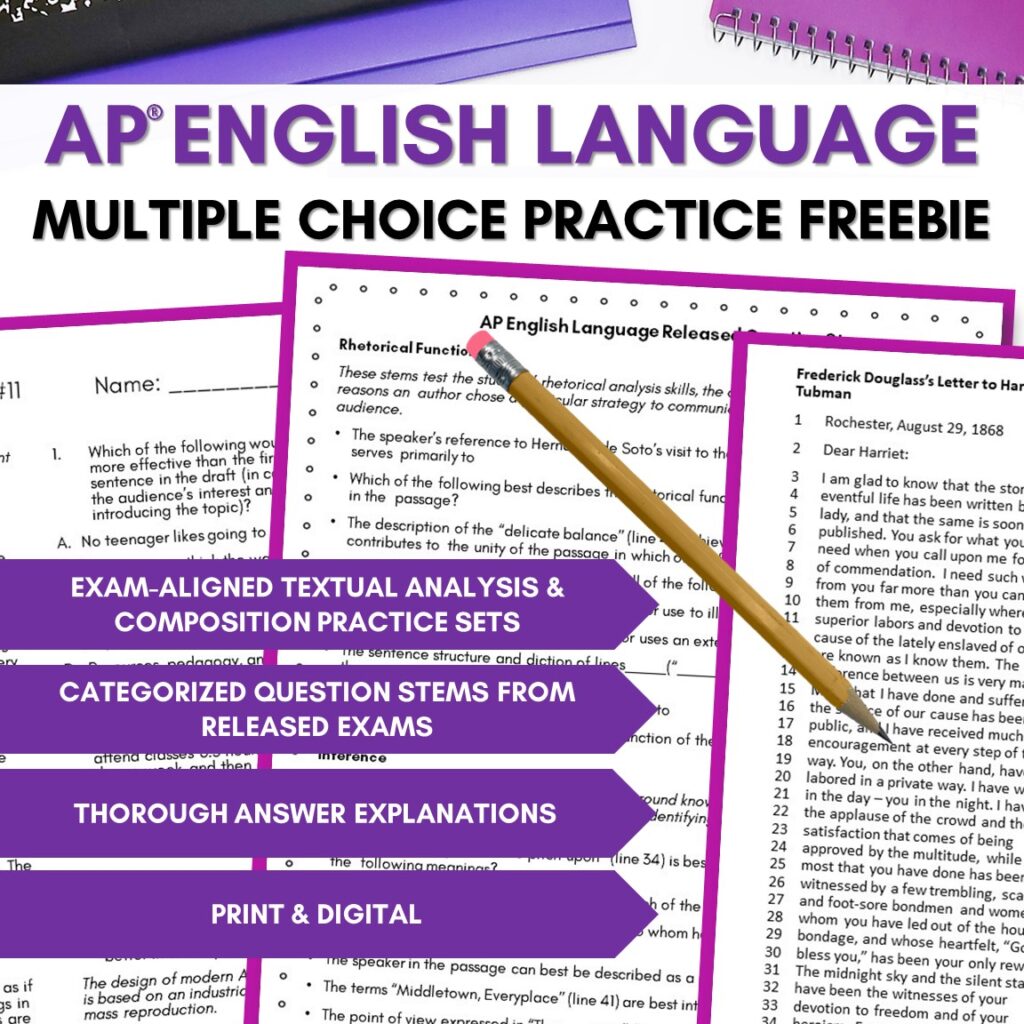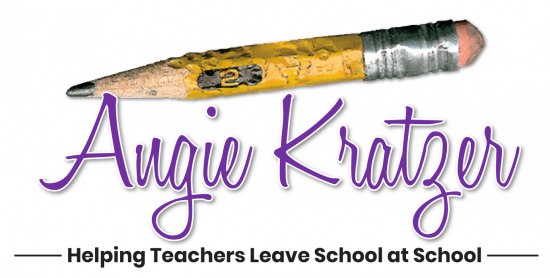Three hours and fifteen minutes. That’s it. You get three hours and fifteen minutes to prove that you have the reading, analysis, writing, and revision chops to get a freshman-level college credit.
Time management is considered in some circles to be cheating, a way of gaming the system instead of just showing what you can do. Just focus on the exam skills, they say. Just teach the content, and let the chips fall where they may.
I disagree. Time management on the AP English Language & Composition exam is the very thing that will allow you to show off your skills.
In 2025, all students will be testing digitally using the Bluebook testing app. (Why Bluebook? Those of us who are older than dirt literally wrote our test answers in small blue books in college.)

Free Response on the AP Language and Composition Exam
You’re going to have two hours and fifteen minutes for the free response section. Question 1 is synthesis, Question 2 is rhetorical analysis, and Question 3 is argument.
Time Tips:
1. Skim all three prompts quickly before you decide where to start. You need to have a plan.
2. Start with your strongest skill set. If you know you can kill Question 3, begin there. Knock out your best essay first while you’re the freshest. (There is an argument to be made, however, that you should start with the weakest while you’re the most fresh, but I’m in the lean-in-to-your-strengths camp.)
3. Loan time to your weakest prompt. You have 15 minutes to read and then 40 minutes to write each essay. If you can knock out Question 2 in 35 minutes and Question 3 in 30 minutes, you are loaning time to the one that might be most difficult for you, Question 1. You can do them in any order you wish, so choose wisely.
4. Keep to 40 minutes per essay. You have a timer at the top of your screen, but there will be no one to tell you to move on to the next essay. If you glance at the time and see that you have spent 50 minutes on Question 1, you need to move on.
5. Don’t waste time on a fluffy introduction. Write a fantastic thesis, offer a blueprint of your essay, and go.
5. Don’t bother with a conclusion unless you can offer insightful commentary at the end of an essay. If you’re going after the sophistication point on any given rubric, the conclusion might be worth writing, but most of the time, students just summarize what they already wrote as if the person scoring needs a recap. Most conclusions are ineffective, so unless you can dazzle ’em, move on to the next essay.

Multiple Choice on the AP Language and Composition Exam
1. Know your test. You’re the boss of this exam, so walk in knowing exactly what you’re facing. You’ll have 60 minutes to read 5 passages, answer 45 questions, and show off what you can do. Roughly 24 questions will be on your reading and analysis skills, and roughly 21 will be your writing and revision skills. It could be 23 and 22, but you get the idea.
Each question has two parts—the question itself and the answer choices. In testing lingo, these are the stem and the foils.
Stems can be grouped into categories or types of questions. They range from tone and attitude (the softballs) to rhetorical function (the fastballs).
Softballs:
- The speaker’s tone at the conclusion of the passage (lines 50–58) is primarily one of
- In line 52, “those’’ refers to which of the following?
Fastballs:
- The description of the “delicate balance’’ (line 41) achieved at jazz jam sessions contributes to the unity of the passage in which of the following ways?
- In the fourth paragraph (lines 52–67), the writer introduces a hypothetical scenario primarily to
If you want a closer look at stem types, read this blog post.
2. Be aware of time. In the Bluebook app you’ll be using on exam day, there will be at the top center of the page. Feel free to hide it, but check in every time you are about to start a new passage just to see where you are. When you factor in reading time, you’re looking at roughly one minute to answer each question. That’s not a lot of time!
So how do you make the most of that time?
3. Recognize your nemesis. Each question will have four answer choices—one correct, two that are relatively easy to eliminate, and one detractor. The detractor, you may remember from another drill-down blog post, is that one option designed to evaluate just how well you read or revise. If you get a question wrong, this is the likely culprit. The two you can eliminate may be synonymous, irrelevant, or a result of misreading the passage. But that detractor (often called the foil) is going to be the one that makes you question yourself.
In Bluebook, you will see in the upper right-hand corner of the screen a small blue ABC icon with a slash mark through it. When you hover over it, you’ll see a dark gray box with the words “Cross out answer choices you think are wrong.” Click on the icon to use the answer elimination tool. If you’re 100% an answer is wrong, mark it out AND DON’T COME BACK TO IT. Don’t second guess yourself; eliminate and move on to find the correct answer.
4. Move on. If you know you’ve spent too much time on a question, let it go. Once you have it down to two choices, chances are one is the correct answer and the other the foil. Pick one and move on. There is a flag icon above each question, and you can mark a question to come back to it, but there will probably not be enough time to do that. If you find that you’re doing really well on time, come back to flagged questions while you’re still on that passage. Don’t get to the end of the whole multiple choice section and then go back to flagged questions. The time it will take your brain to reconnect to a passage you read 45 minutes ago will not be your friend.
5. Be faithful. Don’t cheat on a passage (or yourself) by jumping to another because you’re bored or are looking for an easier text. Your brain has to reconnect to the content of a passage every time you change, and you don’t have time to make that switch. You know how you get into flow sometimes when you’re writing, playing an instrument, or reading? Studies show that it takes 25 minutes to get back into flow when you’re interrupted. Yeah, we don’t have that kind of time.
6. Read it all. Many of the stems you encounter in the reading portion will be about big picture development, connections between ideas, and author’s purpose. In order to have a chance at those questions, you need to read the whole thing. Plus, you can’t answer quickly and with confidence if you haven’t read.
7. Ignore #4. If you’re running out of time (like seriously running out of time) and you have two passages left, look for isolated “point to it” questions with line numbers like these:
- The author’s observation in the sentence beginning “It is clear’’ (lines 49–51) is best described as an example of which of the following?
- Which of the following versions of the sentence in lines 4-5, reproduced below, is clearest?
You can also look for composition questions that offer the context within the question. In the question below, the stem itself gives the reader a way to answer without reading the whole passage:
- In the fourth paragraph (sentences 10–11), the writer wants to provide further evidence to rebut the claim that converting to the metric system might be difficult. Which of the following pieces of evidence would best achieve this purpose?
8. Pick a letter. Let’s say you check that timer at the end of a passage, and you realize that you have one more to go. That’s not going to happen, right? Pick a letter—C, for example—and mark all the answers C. The odds are in your favor that you will get something right by accident. Remember that you aren’t penalized for getting questions wrong (as opposed to leaving them blank), so educated guessing is ok.
Teachers, want to give your students a leg up on the exam? Grab this AP Lang multiple choice stem breakdown and practice freebie.


